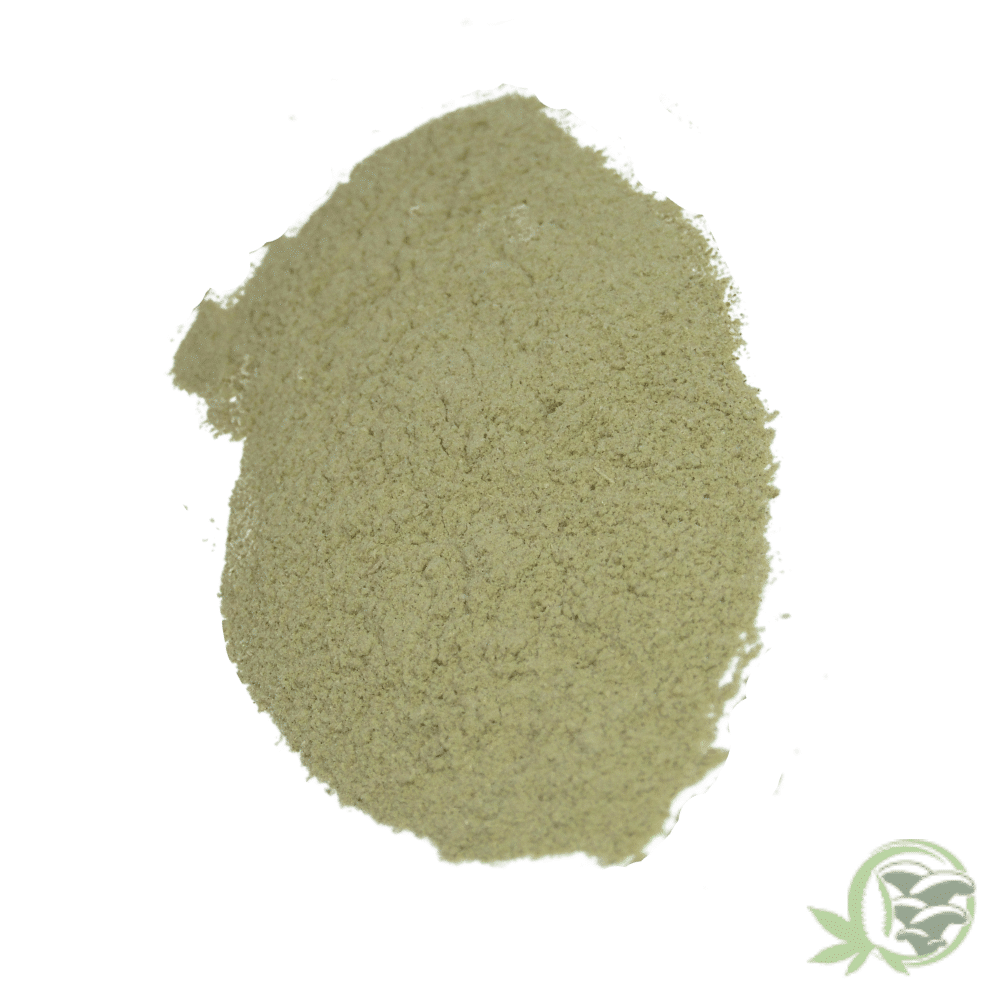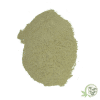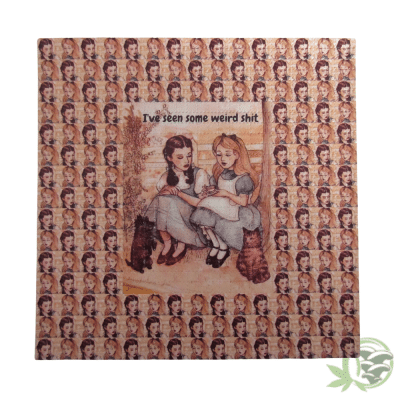San Pedro Psychedelic Cactus
San Pedro (Echinopsis pachanoi or Trichocereus pachanoi) a hallucinogenic species of cacti native to South America. The cactus, also known as huachuma or wachuma, has been used as a sacrament for more than 3,000 years in the Andes. In these traditional contexts, San Pedro is used by healers or curanderos to diagnose illnesses. The plant can also be consumed in rituals known as mesas to help heal illnesses or gain insight into everyday problems. Nowadays, there’s growing interest in working with San Pedro to address trauma, addictions, or disorders.
San Pedro, similar to peyote, contains mescaline, a psychoactive phenethylamine alkaloid that stimulates serotonin receptors. The compound is a hallucinogen and can promote feelings of love, unity, and connection to others and the surrounding world. Many individuals are also motivated to journey with the plant to explore their spirituality, connect with nature, undertake psychotherapeutic work, or enhance creative or cognitive abilities.
Like all hallucinogenic plant medicines, San Pedro should be treated with respect and reverence. You can pave the way for a positive experience by mindfully sourcing (if you haven’t grown it yourself) and preparing San Pedro. It’s vital to take the time to determine the appropriate dosage, cultivate a safe mindset and setting, and dedicate a full day to journey with the plant.
How to Consume San Pedro Cactus
San Pedro can be chewed or eaten whole, but this is generally reserved for fresh Cactus. Once dried, the best method of ingestion is brewing it into a tea. The cactus is ground and soaked to help release the mescaline from the plant matter.
The powder that we sell is from the San Pedro flesh that’s been dried and pulverized into a powder. The waxy outer layer of the cactus is removed, the thorns extracted, and the dark green flesh of the plant peeled back. These shavings are then dried out in the sun over a day or two, placed in the oven for several hours at a very low temperature, or left in a dehydrator. The powder can then be consumed straight, stirred into a liquid, or inserted into a gel cap.
How to Make San Pedro Tea
San Pedro tea is made by boiling the ground-up San Pedro from the cactus with approximately three litres of water. The brew is left over medium heat for three to four hours, resulting in about one 250ml cup of tea. Next, the concoction should be strained using a cheesecloth and cooled.
The San Pedro can be boiled again with two litres of water for about two hours to extract more alkaloids. Following the second boiling, the concoction is again strained and blended with the first batch of tea. For a slower brew, the cactus remnants can be left in a slow cooker and simmered at a very low setting overnight before being strained.
Individuals who have taken San Pedro tea often share that it tastes very unpleasant, so many concentrate the liquid as much as possible, so less needs to be consumed (usually a maximum of one to two cups per person). A more concentrated brew can also mean less liquid in your stomach during your trip, which may equate to a reduced likelihood of nausea. In addition, including lemon juice in the tea may help to minimize nausea.
San Pedro Tea can be consumed cold, but it’s more palatable to be reheated. The tea has a very bitter taste so you may want to add a sweetener, honey, sugar, mint, ginger, and/or any tea flavour.
San Pedro tea can be stored in the fridge for a week or in the freezer indefinitely.
Tips for consuming San Pedro
Use San Pedro in an environment where you feel comfortable and safe.
You will likely be emotionally and physically vulnerable during a San Pedro trip. It’s best to not use these products with people that you don’t know well or trust. Your mindset and your environment will be significant factors in having a positive or negative experience.
Consuming San Pedro can often cause feelings of nausea, so it’s best to consume it on an empty stomach. Drinking ginger tea before or during consumption should help reduce nausea. The nausea is caused by the cactus itself and not from the mescaline that it contains.
It’s best to not consume San Pedro alone; this is especially true for your first few times. Alone or in a group, it’s best to have someone present who has experience with psychedelic states and is not using psychedelics.
If you’re having a negative experience, do not panic. Be calm, drink water, and maybe listen to music and/or lie down. Despite intense physical and psychological effects, San Pedro is a very safe substance and very unlikely to cause any long time harm. Any unpleasant physical or psychological effects are likely to pass soon.
Physical preparation can involve ensuring a good night’s sleep the night before and consuming a light, healthy meal. However, some choose to observe fasting or a specific diet or dieta several days before use. Mental preparation may include consciously cultivating a rested state of mind in the time leading up to the experience and minimizing stressful stimuli. Seasoned users caution against embarking on a San Pedro journey in an anxious, stressed state of mind.
How to Microdose San Pedro
A microdose of 1 – 6g of San Pedro can be taken for gentle mood enhancement, and to treat conditions such as depression and PTSD. If microdosing San Pedro regularly then it’s best to wait at least 2 days between doses. Start with a 1 – 2g dose and increase subsequent doses until the desired effect is found.
San Pedro Dosing and Timeline
Mescaline is chemically similar to LSD and as such has many similar effects. A noticeably psychoactive dose of Mescaline is between 200 – 400mg. Dried San Pedro usually contains 2-3% mescaline by weight (20-30mg per gram). It’s also essential to be aware that there is no way to ascertain how much mescaline is present in a cactus, making dosing difficult. Fifty grams of powdered cactus may contain as little as 150 mg of mescaline or as much as 1,150mg of mescaline since mescaline content varies between cacti.
San Pedro Dosing Guide
Microdose. 1g – 6g
Low Psychedelic 7g – 14g
Standard Psychedelic 16g – 32g
High Psychedelic 35g – 50g
The San Pedro Cactus dosing guide above is only a rough guide. The amount of mescaline in a San Pedro cactus can vary widely; factors like body weight, stomach contents, and mental state can also affect perceived potency.
San Pedro Effects Timeline
This is an approximate guide to the timeline of the expected effects of the San Pedro cactus. This can be affected by things like body weight and consumption methods. Do not take more until at least 2 hours after dosing. Higher doses will tend to last longer.
60 – 90 min: Physical discomfort begins
90 – 120 min: Psychological effects begin
3 – 5 hours: Psychological effects peak and physical discomfort lessens
5 – 8 hours: Psychological effects persist
8 – 12+ hours: Psychological effects fade
The total dose can be staggered. For example, if consuming San Pedro as tea, half can be drunk, allowing 30 minutes for the body to settle. Usually, an awareness of the medicine can be perceived as a shift in the body after 30-45 minutes. Another quarter of the brew can then be ingested, waiting and observing for the onset of the effects. After two hours, the hallucinogenic effects of mescaline may become apparent, and the final quarter of the tea can be drunk at this stage.
Staggering the intake can encourage the user to respond mindfully to psychoactive alkaloids as the body metabolizes them. Oral mescaline has a longer half-life than other classic psychedelics, so prolonging the intake beyond a two-hour window may prolong the experience. The total duration of a San Pedro trip usually lasts on average from 8-12 hours, with an afterglow that can linger after the experience.
It’s best to take the San Pedro earlier in the day or you may be up all night. It’s beneficial to have at least 2 days set aside for a larger San Pedro experience. One day for the San Pedro trip, and the next day to reintegrate and fully absorb the San Pedro experience.
Effects of San Pedro
San Pedro cactus is a hallucinogen and causes distortions in the perception of reality. This can include experiencing auditory, emotional and visual stimulations that are not necessarily real. The active compound in San Pedro, Mescaline, affects the bodies serotonin receptors, most effectively targeting those attached to the visual cortex. Serotonin is a neurotransmitter that has a significant effect on most of our brain cells. Serotonin is one of our essential hormones and impacts your entire body. Not only does it help forge neural pathways between brain cells, but it also helps to regulate sleeping, eating, digestion and muscle control.
Though the exact effects of San Pedro are different for everyone, the most common impact, especially with larger doses, is hallucinations. Many people describe the high as feeling “dream-like.” Mescaline is a potent psychedelic, causing most people to have extremely vivid hallucinations. Mescaline, and other psychedelics, can affect multiple senses, and in some cases, can produce synesthesia when senses blend and users report “feeling colours” or “seeing sounds.” In some cases, San Pedro can significantly enhance the senses, causing your perception of them much more vibrant or sensational.
Visions
The most common intended use for San Pedro is to induce “visions.” In larger doses, mescaline can cause extremely vivid experiences not necessarily happening in the real world. On the other hand, they may feel hyper-real to the user. These visions can manifest themselves as part of the surrounding world or take you to a completely different place and time in your mind. For this reason, you should always have a spotter with you when using San Pedro to ensure your physical safety.
These visions can be both highly profound and highly overwhelming. Like with all hallucinogens, it’s best to set your intentions ahead of time. Remember that set and setting play a massive role in manifesting a more positive experience and avoiding the possibility of a “bad trip.” San Pedro can unlock deep mysteries inside your mind but also feel very chaotic. The more positive feelings and emotions you bring into the experience, the more you will get out of it. These adverse effects can be intensified when San Pedro is mixed with alcohol or other stimulants, so it’s best not to use San Pedro in conjunction with any other substances.
The effects of San Pedro are usually felt approximately 30 minutes after ingestion. In most cases, people feel nauseous, and vomiting is very common. In addition, many people describe profuse sweating and subsequent chills. However, these side effects are usually mild. Approximately two hours after ingestion, San Pedro reaches its peak hallucinogenic effects. It’s good to plan your San Pedro use accordingly as these effects can last upwards of 8-12 hours, depending on the dose. Many compare the experience of too intense LSD “trips” or effective dose psilocybin use.
Common Side Effects of San Pedro
The physical effects of San Pedro are similar to those of LSD, peyote, or larger doses of psilocybin. Many people experience flushing and increased blood pressure, body temperature, heart rate and sweat production. It is not uncommon to experience appetite loss, difficulty concentrating or sleeping, numbness and weakness after the San Pedro has run its course. Severe nausea and vomiting are also quite common occurrences, but only in larger doses meant for inducing “visions.”
San Pedro causes altered awareness, feelings and perception. It can also greatly impair your perception of time and your surroundings. Some people find the euphoria and hallucinations a little too intense, evoking anxiety, panic or paranoia.
Psychedelics
Psychedelics fall into the hallucinogens category of psychoactive substances that causes changes in cognition, perception and mood. They achieve this by interacting with the body’s serotonin receptors, creating altered states of consciousness, or “trips.” Psychedelics affect all of the senses and can cause specific auditory, visual and psychological changes.
Psychedelics typically bind with the body’s serotonin receptors. Serotonin is one of our essential hormones and impacts your entire body. Not only does it help forge neural pathways between brain cells, but it also helps to regulate cognition, sensory perception, sleeping, eating, and digestion. Serotonin is also responsible for triggering hormones that increase arousal and trust. Large amounts of serotonin are likely responsible for the typical characteristics of heightened emotional closeness and an elevated sense of well-being felt by those who use psychedelics.
Other than changes in cognition and perception, one of the critical characteristics of psychedelics is ego-loss. This detachment from your own “perceived self” allows you to connect with your surroundings and others around you more intensely. As a result, the psychedelic experience is often spoken of when comparing states of intense meditation and both mystical and near-death experiences. The chemical compounds in DMT are also released naturally in the human brain at both birth and death. Some hypothesize to be the reason we experience vivid flashbacks moments before a near-fatal accident, you.
Order San Pedro cactus online in Canada from SacredMeds!



Reviews
There are no reviews yet.